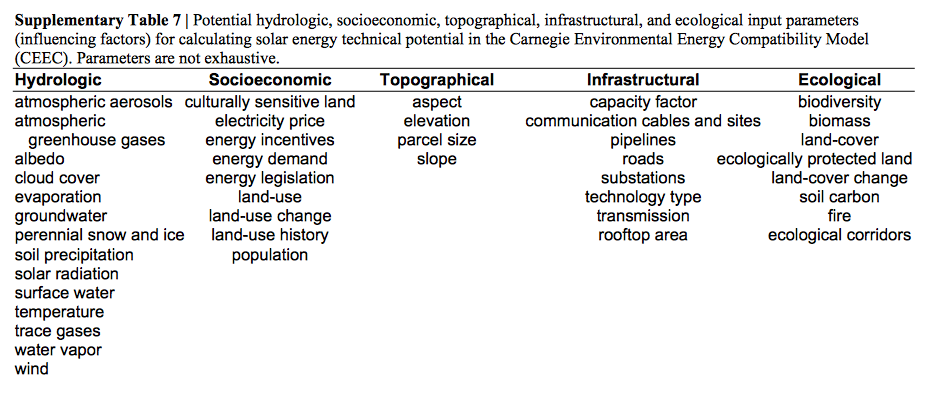Retrieving the climate and removing the cost and uncertainties of fossil fuel have become life-saving priorities in the 21st century. Rebecca Hernandez, Madison Hoffacker, and Christopher Field decided to see how far they could take the idea of using only sustainable sources to generate energy. They reasoned that if we use our land resources efficiently, we can power our current lifestyle with clean energy alone.
You’ll be glad to know that the resource they chose to investigate was solar energy! As for the site of their experiment, they chose the state with the most solar experience: California. Nature Climate Change, a subsidiary of the renowned magazine Nature, published the results of the California solar study just this spring. In a nutshell, the authors discovered that yes, using the local environment wisely could provide universal access to electricity, heat, and transportation in the Golden State. Below are the factors the Hernandez team considered in the study.
 The researchers compiled land maps to describe each of the factors they weighed into the conclusion of which California lands are suitable for which method of development.
The researchers compiled land maps to describe each of the factors they weighed into the conclusion of which California lands are suitable for which method of development.
Hernandez and her colleagues focused on two solar technologies that the state uses today–small- and utility-scale solar energy within the state’s existing developed areas. The California solar technologies they looked at were rooftop and other simple photovoltaic panels like the ones we often discuss here in Cost of Solar, and concentrating solar power. CSP involves energy produced by focusing the sun’s rays through mirror arrays in a large unpopulated area that is dedicated to power generation.
The researchers found that land, energy, and environmental compatibility can be achieved by using only these two types of California solar. In fact, they discovered that PV and CSP, in a two-to-one ratio, could produce all the accessible energy the state needs, and then some. It might be enough to meet the state’s energy consumption demand three to five times over.
The bottom line (and perhaps not only for California)–“Solar energy within the built environment may be an overlooked opportunity for meeting sustainable energy needs in places with land and environmental constraints.”







